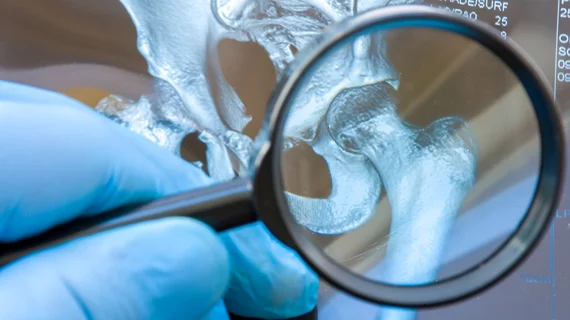Hip ultrasound use surges, with no corresponding jump in dysplasia diagnoses, claims data reveal
The use of hip ultrasound among young children has surged over the past decade without a corresponding uptick in developmental dysplasia diagnoses, according to a new analysis of claims data.
Such improper formation of the ball and socket joint is an important contributor to musculoskeletal problems early in life. Yet, effective methods of screening for dysplasia remain “controversial,” with some urging for universal screening, experts detailed May 5 in Clinical Imaging.
Wanting to better understand this concern in the U.S., researchers tapped Optum’s database of commercial and Medicare advantage claims, which included 2.9 million relevant beneficiaries per year. They pinpointed more than 6,800 cases of developmental hip dysplasia recorded in the decade that ended in 2017, at a rate of roughly 1.7 per 1,000 infants.
Hip ultrasound screening was employed in about 0.4% at the start of the study period in 2007 but leapt “substantially” up to 2.2% 10 years later. Despite that uptick, prevalence of dysplasia diagnoses did not increase at the same clip.
“Our results suggest that expansion of hip [ultrasound] screening may not effectively increase [developmental dysplasia of the hip] detection although further investigation is needed to ascertain optimal screening strategies to improve patient outcomes,” concluded Andrew Degnan, MD, a pediatric radiologist with Abington Hospital, and co-authors from the Harvey L. Neiman Health Policy Institute, and several other entities.
Female patients were more likely to be screened and diagnosed with dysplasia, comprising 72% of cases in the study. Some of the most common billing diagnoses included hip deformity (27%), breech delivery (20%) and physical exam abnormality (18%). Average imaging costs per patient for screened children were about $108.94.
While dysplasia cases oftentimes resolve either spontaneously or with conservative treatment, late-presenting instances can require expensive care with poor outcomes, the authors noted. One 2014 study estimated that costs of surgical correction cost an average of $10,000 per child. Some countries employ universal screening, with ultrasound demonstrating “excellent” sensitivity at upward of 95%. Proponents have suggested such programs can bolster outcomes while reducing costs. But Degnan et al. believe the optimal strategy remains undefined locally.
“Additional randomized controlled trials of US screening for DDH detection in broader populations applicable to the United States are needed to guide national recommendations,” they advised.

